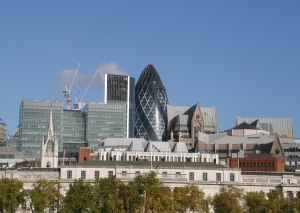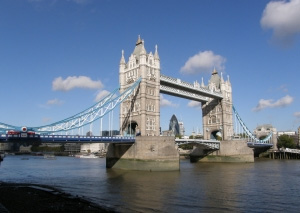Sell my car in London

William: I live in Notting Hill. You live in Beverly Hills. Everyone in the world knows who you are, my mother has trouble remembering my name.
Anna Scott: I'm also just a girl, standing in front of a boy, asking him to love her.
Jamie: Beautiful Aurelia, I've come here with a view of asking you to marriage me. I know I seems an insane person - because I hardly knows you - but sometimes things are so transparency, they don't need evidential proof. And I will inhabit here, or you can inhabit with me in England.
Sophia Barros: [in Portuguese] Definitely go for England, girl. You'll meet Prince William - then you can marry him instead.
What’s the similarity between these conversations? These are from the films Notting Hill and Love Actually (respectively), wherein production mostly took place in London ? e.g. Notting Hill, Trafalgar Square, the Millennium Bridge, Heathrow Airport, etc.
London: Preserving Its Iconic Beauty
The capital city of England and the UK has played a major role in British media. Plenty of British and even American films are set in London because of its royal palaces, stunning skyline, distinctive atmosphere and iconic streets. And while pollution might be high, diesel-powered cars might just be banned from the roads. The Mayor, along with the UK Government and motor industry, has encouraged the use of electric and other low-emission vehicles.
The realisation that you need an eco-friendly, economic model might make you ask "How do I sell my car in London when there’s a movement to improve air quality?” You’ll be glad to know that we can guarantee a quick and secure sale here at The Car Buying Group. No more advertising, no more listings, no more costly processes. We’ll even collect your car free.
London: Thousands of Years Back

“London” only applied officially to the City of London until 1889. Afterwards, it also applied to the County of London and then to Greater London.
Roman Period - In 43 AD, the Romans invaded Britain and then constructed a bridge across Thames and a port. The river’s depth was sufficient for ships yet safe from German raiders. In 50 AD, Roman merchants developed a town ? now London ? by the bridge. Then, Queen Boudicca led an uprising against the Romans in 61 AD, but nothing was done in defence. London was burned but rebuilt after Boudicca was defeated. The town became an important trading place.
Saxon Period - In 407 AD, during the “Dark Ages”, London wasn’t much of a town anymore and only a few people lived inside the walls built by the Romans. However, a smaller town was developed outside the walls. And Roman monks introduced Christianity in 597. A bishop was selected in 604.
The Danes raided the town in 842. They came back in 851 and then burned a large area. Then, they conquered Eastern and Northern England, including London. King Alfred the Great overpowered them in 878 and split England. He took the West and South, while the Danes took the East and London. But the peace treaty didn’t stop King Alfred’s armies from taking London in 886.
Accordingly, King Olaf of Norway tried to attack England in the early 11th century. But he and his men couldn’t sail past Thames because of London Bridge. So they tied the wooden struts to their boats with ropes and rowed away, making the bridge collapse. Hence, the nursery rhyme, “London Bridge is falling down?” However, there were speculations over the event’s validity due to the lack of records.
Edward the Confessor constructed a wooden palace at Westminster in 1042, which later became the meeting place of the Parliament. This made Westminster the seat of government, and not the city itself. He also developed Westminster Abbey, which received consecration after his death.
Middle Ages William the Conqueror was crowned England’s king on 25 December 1066 at Westminster. Then, he constructed a wooden tower to guard London. It was replaced with a stone tower in 1078, giving birth to the Tower of London.
Throughout the 12th century, the town’s population grew and people built homes outside the walls. The bridge across Thames was rebuilt using stone in 1176. During this period, London was lively with horse trading and racing as well as archery and wrestling. Friars came in the 13th century. Jews were persecuted and then expelled from England in 1290.
16th and 17th Century The church had control of around a fourth of London’s total land area, but the ownership expired when Henry VIII closed the monasteries. This freed up space for new buildings. Suburbs outside the town grew and rich constructed houses in the late 16th century. In 1600, a line of houses connected London and Westminster.

The bubonic plague killed a lot of people in 1603, 1633 and 1665. But the population recovered quickly after each outbreak. A civil war started between the king and parliament in 1642. After the final outbreak of bubonic plague in 1665, a big fire started on 2 September 1666. It destroyed around 13,200 houses, leaving 70,000-80,000 people homeless. Afterwards, the king ordered that houses be built from brick and stone to avoid another big disaster.
London: 21st Century and Today England’s capital continued to flourish in the 21st century. The Greater London Authority was founded in 2000 while the Tate Modern was opened in what used to be a power station. The London Eye was also launched publicly in the same year. The Shard ? a 95-storey skyscraper ? was opened and the 2012 Olympics was held in London. It also earned the status as one of the greatest cities worldwide.
London: Exploring an Iconic City on Foot Car use is slowly declining in the city, which is just as well considering the amount of harmful fumes emitted. If you’re still driving a diesel-powered model, it’s time to sell your car in London and replace it with a bike or electric model. Our team at The Car Buying Group will take it off your hands through a quick and secure process without extra charges.
There’s really no need to drive around if you’d like to go sightseeing because a lot of landmarks and attractions are close to each other. Leicester Square and the Covent Garden, for one, are only five minutes apart. The Tower of London and Big Ben are also within walking distance. Getting around on foot lets you discover hidden areas such as cosy alleyways, Temple Court and Lincolns Inn.
Doing London a Favour
Selling your car will help a lot in keeping the city’s environment healthy and pollution free. When trying to sell your car in a big city like London, you have various options as to how you go about it. Once you’ve decided on the best route (privately or as part exchange), you will need to prepare your car to achieve the best possible price since you will have competition everywhere as London has so many car sellers, whether they are dealerships or private sellers.
It is always important to understand who you’re dealing with; the credentials of the dealership/private owner are extremely important. You want to know that they are trustworthy and that they will act in your best interests as far as payment and other contractual obligations are concerned. You will want to choose a dealership that takes care of all relevant paperwork to make your life a little bit easier. If you are selling privately, the responsibility to come up with the correct, fair price and preparation of related issues will rest solely on your shoulders. Price your car correctly since buyers shop around and will not buy your car if they think it does not represent value.
Make a good impression and know that preparation is key. Apart from having a V5C certificate for your buyer upon request, be sure you bring out the best possible features of your car once you put it up for sale. Take care of the basics. Maybe it’s time for new tyres; have you checked the exhaust, lights, oil etc. ? do not lose a sale simply because of carelessness, or even because your car is not clean! Your buyer will simply go to the next seller or dealer.
When you have a prospective buyer come to your home, be sure to ask for positive identification and contact details. When they request a test drive (which everybody should, and will), make sure insurance covers this and go with them and answer all their questions truthfully. If you don’t have the answers, admit and promise them you will find out and let them know. You need to build up trust; otherwise you will not sell the car. It is as simple as that.
To summarise, these general tips should go a long way to making things a bit easier when selling: In a big city such as London you can choose the best people to deal with. Shop around. Ensure you can produce important documents such as V5C’s and MOTs on demand. Impress your prospective buyer with a proper service history for your car. Make things easier for yourself. Remember that you will have competition; therefore be well prepared when you’re ready to sell.
We will buy any car: